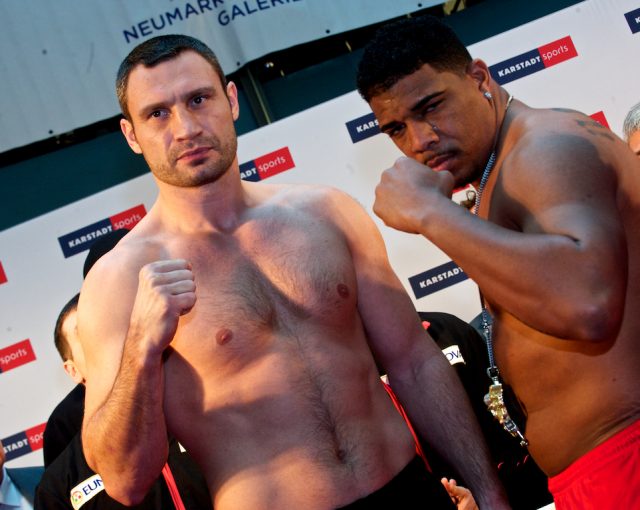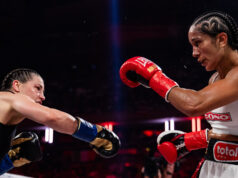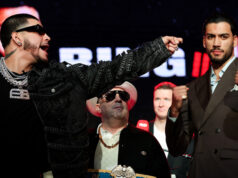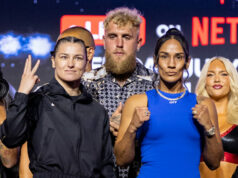If there’s boxing to be found on television, or online, fight fans will find it. That’s what we do, and without the mainstream exposure the sport formerly enjoyed, that’s what we have to do in order to satiate our fistic cravings.
So it was that the fight fever led boxing loyalists to EPIX, which began showcasing boxing cards last March. The sweet science has had few high quality destinations on television in recent years, but the upstart wants to enter the fray and is proving to be an immediate contender.
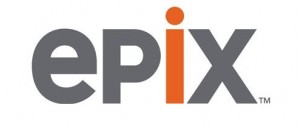 The two-year-old premium movie and entertainment channel was launched by Studio 3 Partners, a joint venture between Viacom and its Paramount Pictures division, MGM Studios and Lionsgate. It launched in October 2009, and features a 24/7 slate of new releases and classic films from their studio partners, as well as a sampling of concerts and other live events.
The two-year-old premium movie and entertainment channel was launched by Studio 3 Partners, a joint venture between Viacom and its Paramount Pictures division, MGM Studios and Lionsgate. It launched in October 2009, and features a 24/7 slate of new releases and classic films from their studio partners, as well as a sampling of concerts and other live events.
EPIX is headed by CEO Mark Greenberg, a former longtime Showtime executive who had run that channel’s boxing department. Therefore, it should come as no surprise that a key component of EPIX’s growth strategy is reaching out to fans and growing brand awareness through an investment in live boxing.
“The EPIX brand is starting to get out there, and boxing has been a big part of that for us, the press we generate and consumer awareness,” according to Travis Pomposello, chief creative officer of EPIX and its senior executive in charge of boxing.
“Consumer awareness is what drives subscriptions and boxing has been a lynchpin in developing that consumer awareness,” says Pomposello.
Growing a Channel One Jab at a Time
EPIX currently is available in more than 30 million homes with distribution partners including Verizon FIOS, Charter Communications, Dish Network and Cox Communications.
While growing the subscriber base and reaching as many households as possible is obviously the goal, Pomposello says that as a commercial free network, they don’t have traditional ratings, and they aren’t measuring their results from a purely numerical or statistical standpoint.
“We are continually gaining new subscribers, but it’s very challenging to gauge.” A household might sign up for EPIX to watch boxing, or to see a Britney Spears concert or watch the latest Star Trek film.
EPIX also doesn’t limit itself to being a traditional television channel, it markets itself as a multi-platform entertainment service. That means they want to bring the action to the consumer wherever they might be, and in any way possible, including on their portable devices and tablet computers, gaming systems and more.
Nora Ryan, EPIX’s chief of staff, adds that with boxing, the channel is trying to reach out to individuals who simply haven’t heard of them yet.
“One of the things we are most focused on in this stage is really introducing EPIX to audiences across the country. We’ve just launched two years ago and a lot of people still don’t know about EPIX the brand,” she says. “So one of the huge benefits to us and one of the things we really love about boxing is that it allows us to reach a segment of the population that is so passionate about the sport that maybe we haven’t touched before.”
These days, there are few players in the field when it comes to televised boxing. HBO and SHOWTIME are the heavy hitters with the outsized contracts — think Alex Rodriguez or Albert Pujols. You hope they hit the ball out of the park every time, although they also have a tendency to strike out and miss entirely, despite the boatloads of cash.
Then you have ESPN2 with Friday Night Fights, the occasional Fox Sports card, and the Spanish cable channels like Telefutura with its Solo Boxeo series. They’re the scrappy guys you can’t help but root for — think David Eckstein. They’ll produce a gem here and there, and they provide good value and entertainment, but there’s an inherent ceiling for what they can accomplish.
And that’s about it – although NBC Sports, the channel formerly known as Versus, is set to debut its new Fight Night series in 2012 as well.
So now we have EPIX stepping up to the plate, and the channel is looking to find some middle ground between the massive bankrolls and outsized expectations of an HBO, and the prospect and club-fight laden cards of an ESPN2.
EPIX Debuts with Klitschko vs. Solis
 In 2011, EPIX broadcast five live boxing events, and consumers were able to order free trials of the premium channel for those weekends. EPIX also streamed each card live – for free – on its website, EPIXHD.com. In that way, EPIX can reach more people than it could simply by broadcasting the fights on television.
In 2011, EPIX broadcast five live boxing events, and consumers were able to order free trials of the premium channel for those weekends. EPIX also streamed each card live – for free – on its website, EPIXHD.com. In that way, EPIX can reach more people than it could simply by broadcasting the fights on television.
“By streaming the fights on EPIXHD.com, we can give even non-subscribers the opportunity to engage with us,” Ryan says.
At that point, the channel hopes to win them over and retain them as ongoing customers. Even without that end result though, new eyeballs are able to take a peek at what the service offers, and additional awareness will have been gained.
The first match EPIX televised was the WBC heavyweight title fight between Vitali Klitschko and Odlanier Solis on March 19, 2011. The fight itself was a disappointment, ending in one round when Solis’s knee gave out. However, for the channel it was still a success, bringing in over 100,000 visitors to the website, according to Ryan.
“It was beyond my wildest expectations,” says Pomposello.
But it was also a learning experience for him and the EPIX team.
“It’s the sport of boxing. I don’t know how you prepare for it, you hope things go well and you find competitive fights. Obviously you’re standing there and you watch Solis go down with a broken leg and that hurts a little bit. That is the game, and we’re certainly not the exception. Every network who has boxing goes through that same up and down with the sport.”
Making Every Dollar Count
These concerns resonate all the more for EPIX, which as mentioned, aired just five fight cards in 2011. As a result, EPIX doesn’t have the margin of error that HBO or SHOWTIME does. Instead, they have to try to maximize the value of each event they broadcast and be opportunistic with which fights they choose to televise, and how much they pay for them.
The New York Yankees can afford to sign Alex Rodriguez for a quarter of a billion dollars, even with declining returns. But the small market teams in baseball certainly cannot. In the same vein, HBO can afford to pay $5 million in rights fees for a fight which ends up as a major letdown, even if it is bad business, but EPIX has to try to make each fight they show worth every dollar.
EPIX declined to comment on how much they do pay for their fights, instead simply saying that it must be reasonable, and the fight must be a good match for the network and its goals.
“Unfortunately in the sport of boxing you don’t always get what you pay for. It’s like all sports where things are very inflated, and we don’t want to play in that realm. So we still look for the value plays,” Pomposello says.
While there’s no easy to follow doctrine that ensures success, Pomposello sticks to a few core principles when selecting fights to showcase. Namely, he searches for affordable rights fees, competitive matches between high quality fighters, and events with multiple television-worthy fights on the docket.
By airing doubleheaders, the network tries to give itself some built in insurance for when the best laid plans go awry, as they did when light heavyweight titleholder Juergen Braehmer pulled out of his May 21, 2011 unification match with fellow titleholder Nathan Cleverly at the last minute. Instead of disaster, the channel could still bank on being able to showcase the highly anticipated match between super middleweight prospects and British rivals George Groves and James DeGale.
Boxing Television for Boxing Fans
EPIX tries to take the approach of viewing their own events as actual fight fans, instead of sticking to rigid corporate blueprints. Gosh, what a novel concept.
“I’m a boxing fan at heart, and there’s a lot of people at EPIX who are boxing fans. When we sit down and think about our broadcasts, we think about what’s best for the network but also what we would want to see and what we would enjoy watching,” Pomposello says.
“We never sat down and said ‘hey, let’s do a fight every month, or let’s do a fight every quarter, or let’s two more fights this year.’ We really seize the opportunities as they come as available, and that’s the same game plan that we have for 2012.”
Thus far, each event they have televised has been based out of Europe and would not otherwise have been shown in the United States. In each instance, there was at least one world title up for grabs.
In addition to airing mostly competitive and worthwhile bouts, EPIX has also been building an entertaining studio show to complement and complete their broadcasts.
They’ve had big names in the sport take part in the endeavor, including former heavyweight champion Lennox Lewis and renowned trainer Freddie Roach. Nobody is going to be handing Lewis a ‘best in broadcasting’ award anytime soon, but nonetheless, his presence adds credibility to the program.
Looking Ahead
EPIX may never showcase dozens of fights per year, wield a multi-million dollar budget or lock up a stable of the sport’s biggest names. But the great thing is that they don’t need to.
By showcasing boxing to the public at large who isn’t already tuning into Friday Night Fights on ESPN2, or buying $54.95 HBO Pay-Per-Views, the channel could actually help the sport at the same time it furthers its own cause. Providing any sort of platform to showcase more boxing is a positive step forward for the sweet science, and for its fans.
EPIX will get its awareness and its subscribers. The fight fans will get their fix. After all, if they show it, we will come. We have nowhere else to go.
It’s a winning proposition, and from both sides of the equation, year one of the EPIX experiment seems to have been a success.


